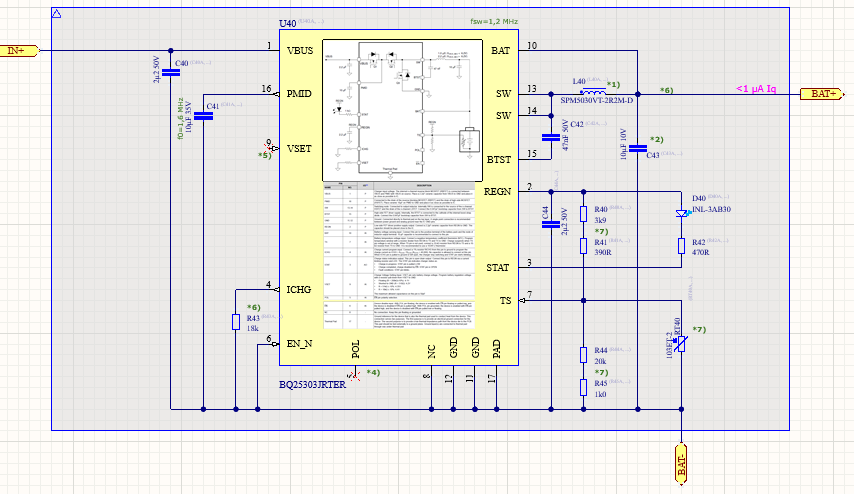Tool/software:
Dear all,
i have an issue with BQ25303J. I'm using it for charging a single cell LiIon battery.
The issue is that when the cell voltage is below ~4 V and I start charging, than stop charging by removing power from the input, BQ25303J is boosting the cell voltage back to the input, delivering a stable voltage of 4,05 V. This leads to BQ25303J not turning off and powering itself. Even a pulldown resistor on the input side doesn't help until decreasing it's value to ~47R (than it turns off). But even when turned of, there is a voltage present at the input side, which is around ~0,5 V below the cell voltage. In this case it can be pulled down by a resistor and some mA Current flow.
When fully charging the LiIon Battery (CutOff voltage is designed to be 4,1 V (which works), BQ25303J turns off normally.
This leads to the fact that i have to fully charge the battery. If i stop during charging, BQ25303J will not turn off, still switching, thus boosting the cell voltage to the input side, draining the battery.
What is wrong here? In the following i put a screenshot of the designed circuit.

On the Input side, which is IN+ and BAT- i connect a 12 V DC Power supply for charging. On the Output side, a single LiIon cell is connected all the time.
I would be very thankfull about support in this case.
Thanks in advance,
Jörg

